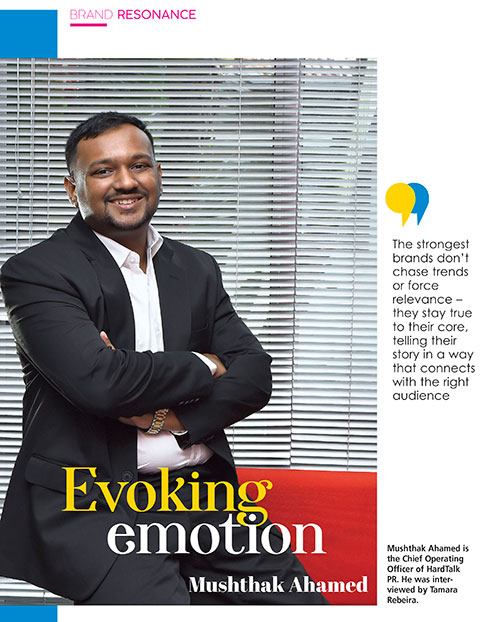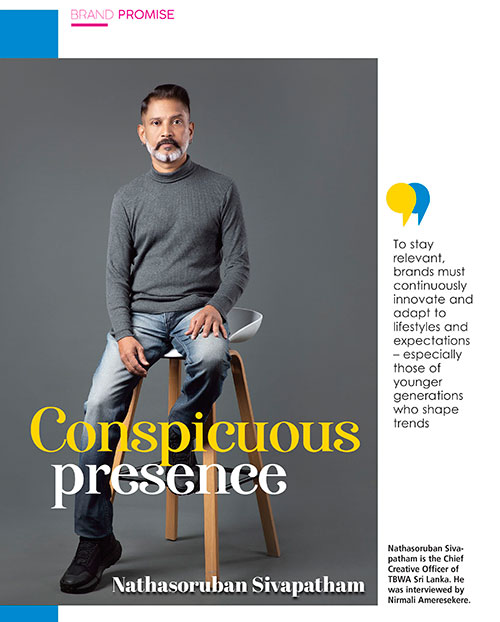COMMUNITY BUILDING
BRAND STRATEGY
Sapna Seneviratne

In your view, what are the hallmarks of a renowned brand?
Great brands have three key features. First, they have a blueprint or playbook that ensures consistent narrative. This means that over time, different stakeholders managing a brand will not impact the consistency of its narrative.
Secondly, brand spends are treated as an asset building exercise – keeping in mind brand valuation.
And thirdly, brands are refreshed as often as necessary to keep pace with the generational turnover so that they age well.
How do you approach crafting a brand identity – e.g. brand names, colour schemes, typography and visual elements?
Brands exist for many reasons. They could be an expression of an entrepreneur’s passion, social statements or at the very least, exist to capitalise on market opportunities.
First, we understand the origins and craft of the brand narrative. Based on that, all other decisions are made to support the brand narrative and differentiate it within its category.
Differentiation is especially important now since we rarely encounter brands that are truly unique. So design considerations become critical to try and break through the clutter.
In terms of aesthetics, it really depends on the team – every designer has a different process; and there is no single process to arrive at answers. Usually, the best argument for success wins.
Could you outline how the digital age has transformed brand building strategies?
It has transformed them in every way possible. The audience has access to multiple sources of information, which means they’re well informed. Audience expectations are not limited to local geography – today, exposure is global.
So to create organic growth, a brand must go from broadcasting to community building. This means the brand should own a position and platform that can enable conversations, connections and commerce.
The scale, format and frequency are also different, which makes it an entirely different process compared to the past.
How do you adapt branding strategies to align with evolving digital consumer behaviours and preferences – such as with Generation Z?
It’s the same process with any target audience – e.g. Gen Z or millennials.
If you are working with a category that specifically targets Gen Z, a deep understanding of trends, affinities or social media habits is required; but for categories that depend on volume, you cast the net wide and adapt your messaging to different target audiences.
All this depends on whether the brand can maintain authenticity when communicating with Gen Z. This is what matters for a socially conscious, hyper informed target group like Gen Z.
What fundamental principles do you believe are essential to a brand’s success and longevity? And how do you apply them to create a cohesive brand experience?
A great brand is always the result of an individual’s or a team’s passion, supported by a long-term blueprint that ensures continuity. Beyond that, it depends on how savvy the board of directors is to weigh in on brand decisions.
Often, I find that there’s not much critical evaluation on marketing and branding decisions – especially when it comes to maintaining consistency, investing in long-term brand building versus short-term goals, and the sync between marketing and business strategies. A lot of factors must come together for something intangible to thrive.
And how do you measure the effectiveness of digital branding efforts?
It depends… for an e-commerce brand, it’s easily measurable; it’s the cost of acquisition or lead generation.
But for brands that are not in e-commerce or belong to categories where e-commerce does not make sense, tracking conversions on digital media spends is difficult.
I encourage non-e-commerce brands to focus on content generation for audience engagement and organic reach through influencers. At the very least, you should aim for first party data collection.





